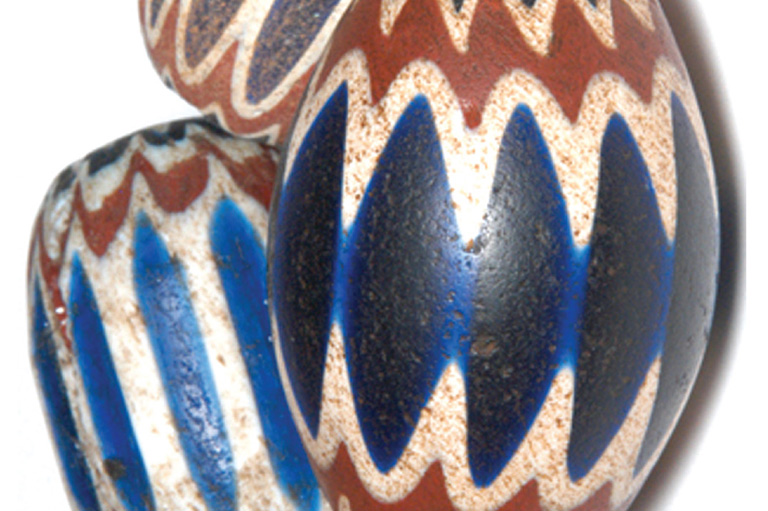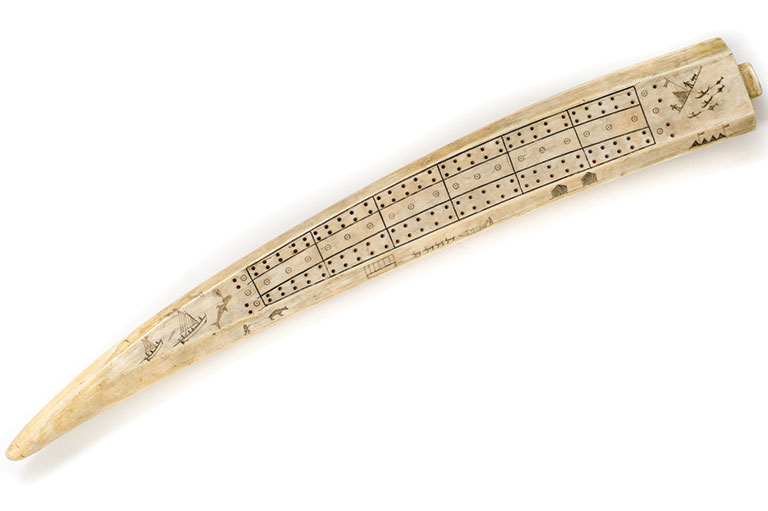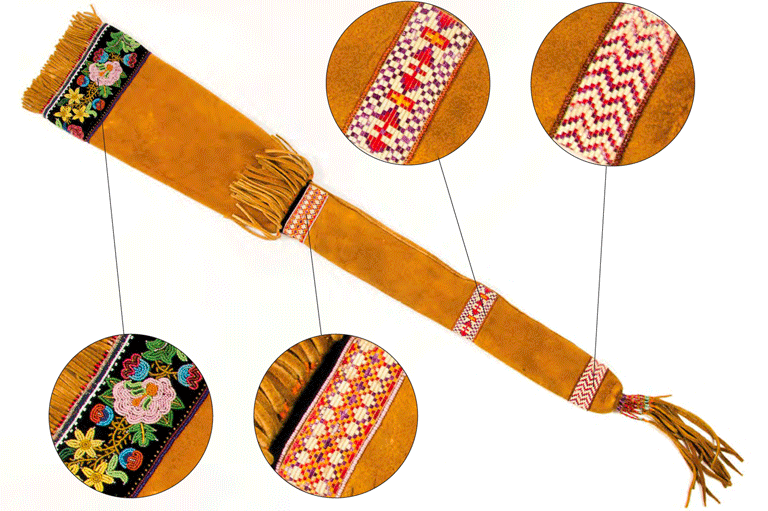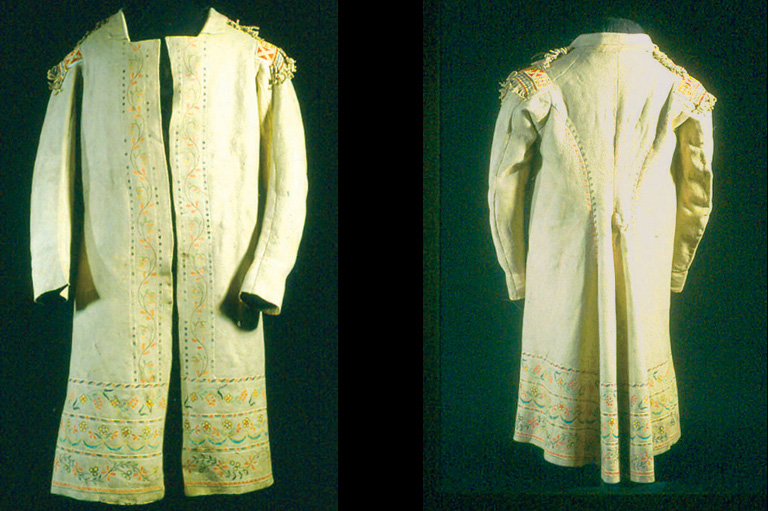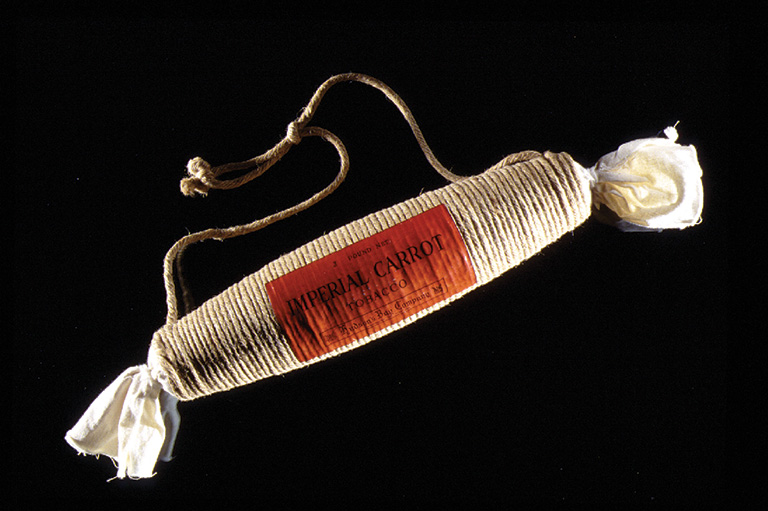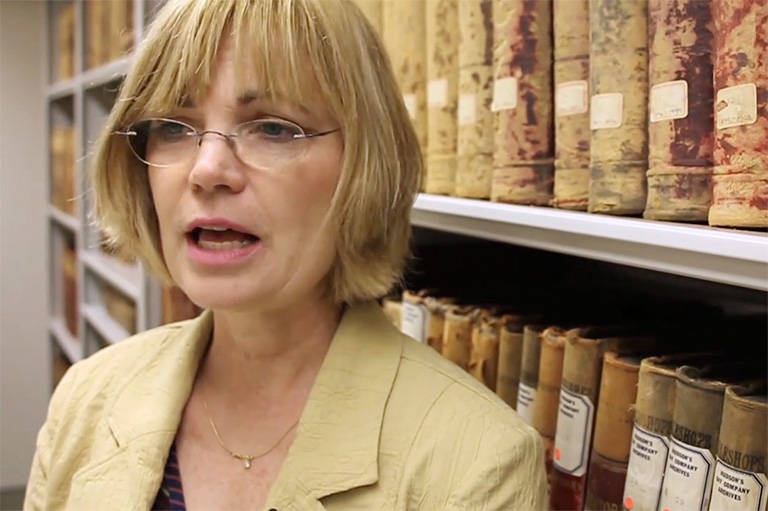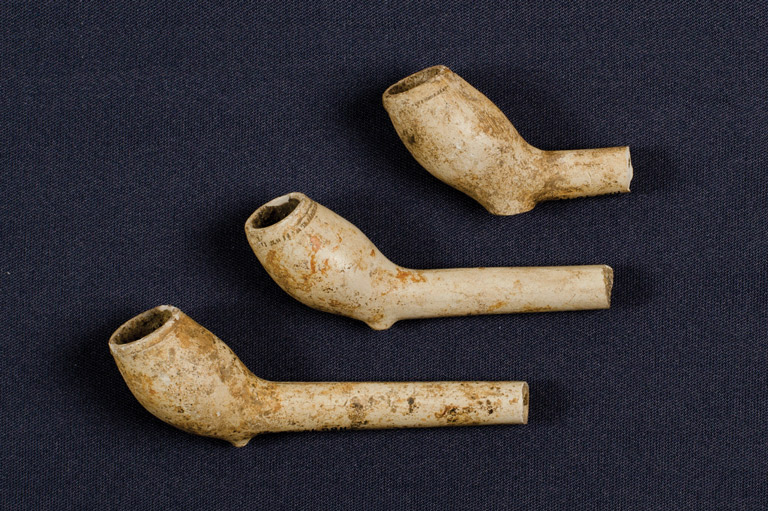The Bible Bag
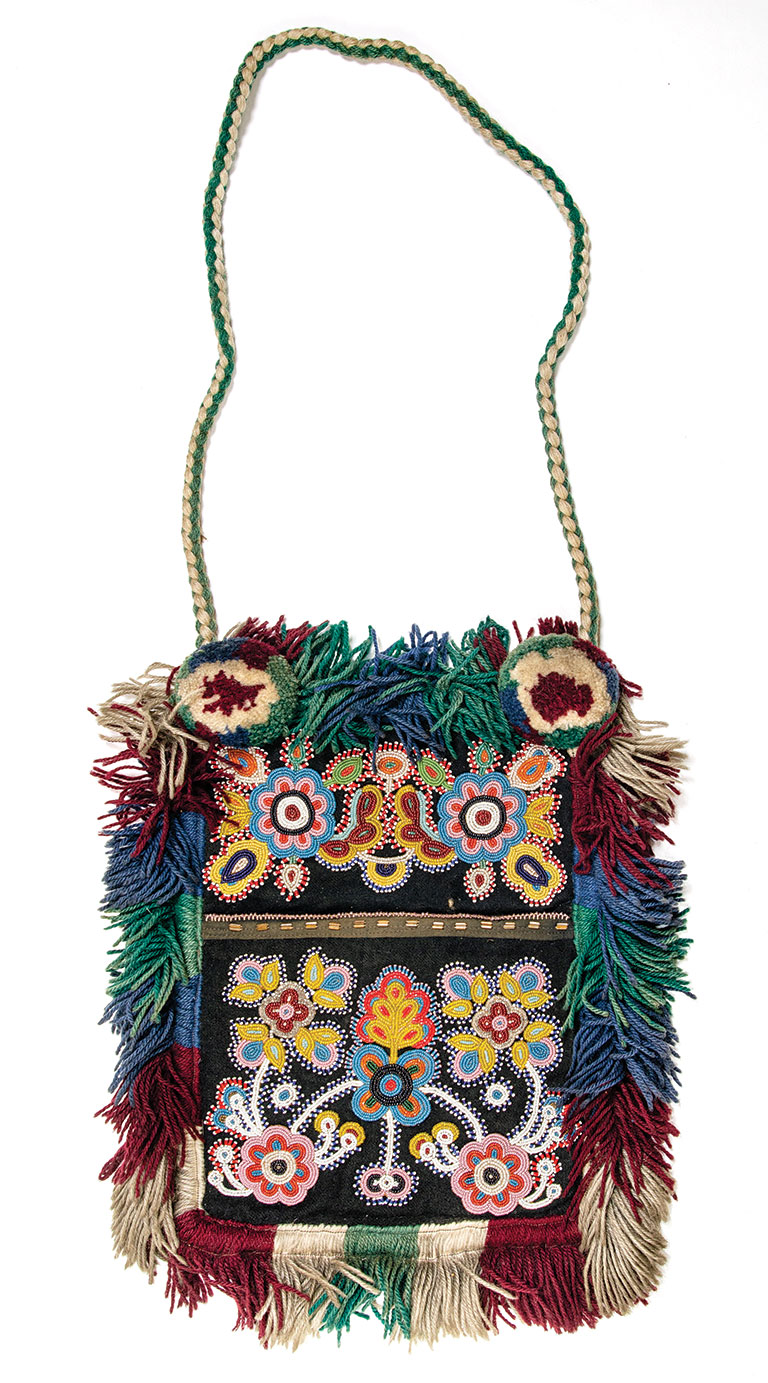
This Bible bag features intricate beadwork, expertly crafted pompoms, a handwoven strap, and a thick fringe of yarn.
It was made by an unknown Cree or Métis woman around the northern Manitoba community of York Factory in the mid-to-late 1920s and was later purchased by Hudson’s Bay Company employee George Fowlie.
In 1923, young Fowlie joined the HBC as an apprentice clerk and made the journey from his home of Aberdeen, Scotland, to York Factory on the shores of Hudson Bay. He used the bag to carry his Bible to services held by an Anglican minister, Rev. Richard Faries.
Fowlie worked with dogsled teams in the Nelson River District and formed bonds with the community. He returned to Scotland for a sojourn in 1929 before working in the fur trade in Grouard, Alberta, until 1934.
Fowlie carefully preserved the handmade objects he acquired during his six years at York Factory, and when he died in 1985 they were passed on to his daughter.
Fowlie’s collection is now part of the HBC Museum Collection housed at the Manitoba Museum.
At Canada’s History, we highlight our nation’s past by telling stories that illuminate the people, places, and events that unite us as Canadians, while understanding that diverse past experiences can shape multiple perceptions of our history.
Canada’s History is a registered charity. Generous contributions from readers like you help us explore and celebrate Canada’s diverse stories and make them accessible to all through our free online content.
Please donate to Canada’s History today. Thank you!
Themes associated with this article
Advertisement

